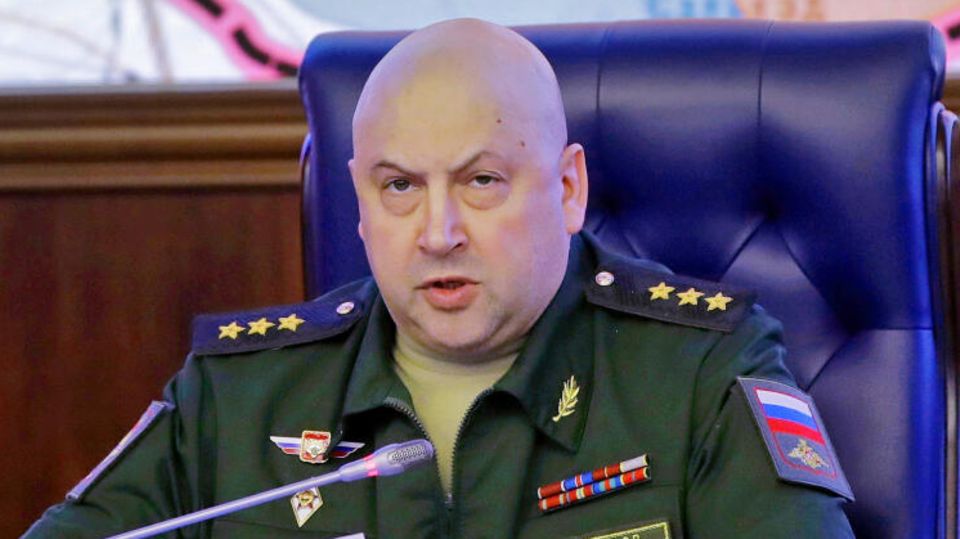Western sanctions
Weak ruble, declining purchasing power: people in Russia are feeling the consequences of the war more and more clearly
St. Petersburg, Russia. People hold a giant Russian national flag next to a statue of Lenin to mark National Flag Day.
© Dmitri Lovetsky / DPA
In contrast to the German economy, the Russian economy is growing – this is mainly due to the armaments industry during the war against Ukraine. Nevertheless, the sanctions of the West are depressing.
Kremlin boss Vladimir Putin, who began his invasion of Ukraine 18 months ago on February 24, 2022 and thus triggered turbulence worldwide, likes to point to a still solid economy. “The current fiscal situation is essentially stable and does not pose any risks to macroeconomic stability,” he said on Tuesday. However, he expects a deficit of two percent by the end of the year because expenditure is higher than income.
Russia under sanctions: no sustainable growth
Western economic experts in Moscow also believe that the country is basically able to withstand the pressure of sanctions better than expected. Numerous governments have imposed tough sanctions on Russia in response to the war of aggression. The Russian economy is even growing, while it is expected to shrink in Germany, for example. However, Western economists also emphasize that Russia owes its growth above all to its war economy and the massive increase in the production of weapons and ammunition. That is not sustainable growth.
Other economic sectors, on the other hand, complain about a lack of orders and, above all, a lack of investments. In particular, the rise in the key interest rate by 3.5 points to 12 percent in the middle of the month hit the economy hard and ultimately failed to stabilize the currency, writes the Russian daily Nezavisimaya Gazeta. Rather, the now high level of interest rates leads to extremely expensive loans, which in turn chokes off the willingness to invest.
August surveys by the Russian Central Bank show that most Russian companies are cutting production for the second month in a row. Accordingly, the companies are also complaining about a shortage of skilled workers – hundreds of thousands of men are doing military service – as well as problems with the logistics of deliveries. For example, Russia has to buy expensive materials and spare parts for foreign exchange.
Because access to the EU is largely closed due to the sanctions, the country imports goods at great expense and sometimes circumventing sanctions via Turkey, Georgia, Kazakhstan and other countries. The cumbersome transport, import duties and unfavorable exchange rates to the euro and dollar make many products more expensive and further weaken the already weakened purchasing power. The central bank put inflation at 4.3 percent in July.
invasion by Russia
Shocking, disturbing, infinitely sad: images from 500 days of war in Ukraine
Weak ruble will last
In the summer, when many Russians go on holiday to Turkey or even Spain, buying foreign currency is currently almost twice as expensive as it was a year ago. On August 23, 2022, one euro cost around 59.5 rubles according to the central bank rate, a year later people had to put down around 103 rubles on Wednesday.
The media close to the Kremlin are now swearing by the fact that a weak ruble could last. “This is how our foreign exchange market is set up now,” reads the cover story on the ruble of the weekly Expert. There is criticism, for example, that the currency on the stock exchange has become an object of speculation. “But in macroeconomic terms, there is no reason to panic.” Oil is still relatively expensive, the geopolitical situation is unchanged.
However, it is also clear that Russia is now earning significantly less foreign exchange. For one, oil and gas exports have declined because of a western boycott and price cap; on the other hand, the commodity superpower handles the sale in rubles, which strengthened the currency last year. But now dollars and euros are missing. Since the country has to pay more than 90 percent of its foreign debt in Western money, the lack of hard currency is noticeable.
According to the central bank in Moscow, Russia will have to pay off around 130 billion US dollars (around 119 billion euros) in debt within twelve months in the financial year that began in April. The payment of dividends for Russian companies abroad is therefore still in foreign currencies. Stricter controls on the outflow of capital are therefore being discussed again. According to expert estimates, around 243 billion US dollars in capital were withdrawn from Russia in 2022, 13.5 percent of gross domestic product.
People get less food for their money
Meanwhile, the main topic in the Russian media is that many people are getting less and less food for their money. The average per capita income has almost doubled over the past ten years to around 48,000 rubles (around 470 euros) a month, according to the statistics agency Rosstat. Taking inflation into account, the value of this sum today is 6.5 percent below the purchasing power of 2013, as “Nezavisimaya Gazeta” has calculated.
However, experts see no reason for the optimism that the Kremlin likes to spread. The paper quotes the Stolypin Economic Institute as saying that more effort is needed for a “strong and respected ruble” that stands for Russia’s sovereignty. For example, new requirements for companies to sell up to 90 percent of their foreign exchange earnings from exports could stabilize the currency.
The Central Bank of Russia temporarily banned the purchase of foreign currency last year and instructed exporters to convert their foreign currency earnings into rubles. This led to an oversupply of dollars and euros and the appreciation of the ruble. The return to the instrument, which is now being discussed, alone slowed down the further fall in the price. According to the Moscow Stolypin Institute, this is not permanently effective. There is a risk that the situation could get out of control.


